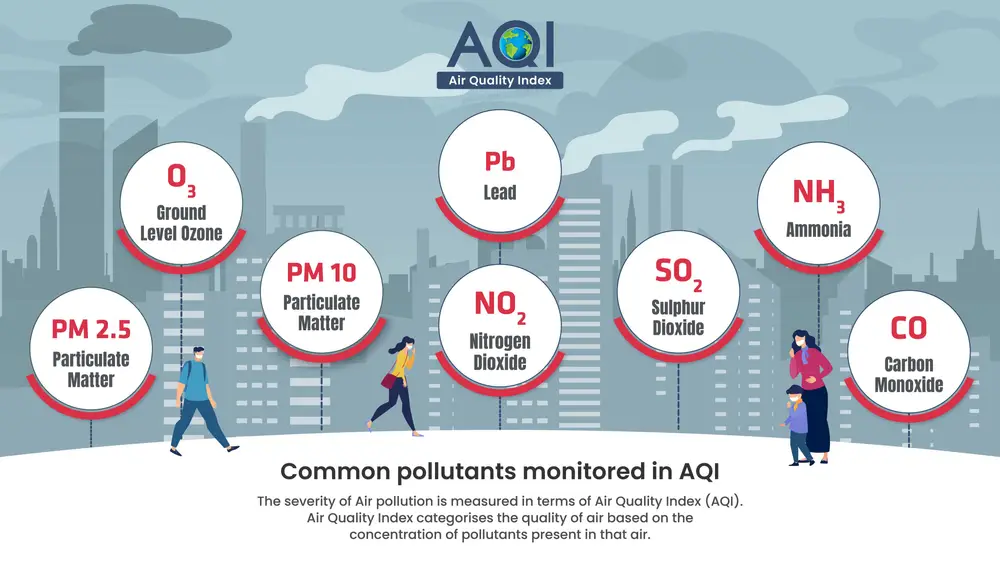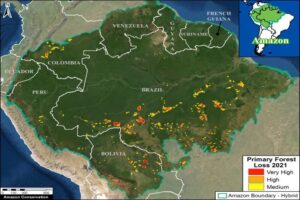
Air Pollution Toxicity vs AQI
Why Measuring Only Concentration is Inadequate — A New Study on PM2.5 and Health Hazards
Why in News?
On May 30, 2025, researchers from the Bose Institute, Kolkata published findings showing that PM2.5 air pollutants cause greater cellular damage not just due to high concentrations but due to a specific toxicity threshold. This challenges the current Air Quality Index (AQI) framework, which primarily evaluates concentration levels, not toxicity levels.
Their long-term study (2016–2023), conducted across the Eastern Indo-Gangetic Plain, showed that oxidative damage to cells rises sharply once PM2.5 crosses 70 micrograms per cubic metre (µg/m³) — a threshold where conventional AQI fails to alert for toxicity-induced health risks.
Introduction
The Air Quality Index (AQI) is a standardized metric used globally — including in India — to communicate the level of air pollution in a region. However, it only reflects the concentration of pollutants like PM2.5, PM10, NOx, and SOx, but not the chemical nature or toxicity of those particles.
This new research argues that toxicity, not just quantity, is critical in understanding health outcomes, especially oxidative stress, respiratory damage, and long-term organ dysfunction. The findings call for a paradigm shift in how air quality is assessed and communicated to the public.
Point-Wise Summary of the Article
- PM2.5: Not Just Quantity, but Quality (Toxicity) Matters
- PM2.5 particles (fine particulate matter less than 2.5 microns in diameter) are extremely hazardous because they can penetrate deep into the lungs and even enter the bloodstream.
- The study found that once PM2.5 crosses 70 µg/m³, oxidative damage in cells increases significantly.
- Current AQI systems do not capture this toxic effect spike, leading to underestimation of health risks.
- Research Conducted by Bose Institute, Kolkata
- Researchers: Abhinandan Ghosh, Monami Dutta, and Prof. Abhijit Chatterjee.
- Region studied: Kolkata and surrounding Indo-Gangetic Plain.
- Method: Long-term exposure data and experiments assessing Reactive Oxygen Species (ROS) generation — an indicator of cellular damage.
- Threshold Toxicity Identified
- PM2.5 at 50–60 µg/m³ showed moderate stress.
- Once it exceeded 70 µg/m³, ROS levels increased steeply.
- Beyond this threshold, the body’s natural defenses collapse, causing oxidative damage to lungs, blood vessels, and vital organs.
- Health Impact of ROS and PM2.5
- ROS (Reactive Oxygen Species) are chemically reactive molecules that the body produces to combat invaders.
- However, when pollutants increase ROS uncontrollably, they begin attacking healthy cells.
- This leads to chronic inflammation, tissue damage, and a higher risk of respiratory and cardiovascular diseases.
- AQI Misleads on Safe Levels
- AQI categories (e.g., “Moderate,” “Poor”) are based only on concentration, not chemical toxicity.
- Example: 60 µg/m³ PM2.5 may be labeled “moderate” — but if the pollutant is chemically aggressive, it can be equally dangerous as a 100 µg/m³ reading with less harmful particles.
- Source-Specific Toxicity Matters
- PM2.5 generated by vehicular emissions and biomass burning was found to be more harmful than PM2.5 from other sources.
- The composition of PM2.5 (i.e., heavy metals, organic compounds, carbon content) defines how dangerous it is, even at the same concentration.
- Implications for Air Quality Policy
- Current standards need to be re-evaluated by considering:
- Source-based toxicity
- ROS-based health impact models
- Threshold toxicity levels, not just averages
- This could lead to a revamped AQI 2.0 that provides early warnings when toxicity crosses safe limits — even if average concentration remains moderate.
Notes on Key Terms for CLAT Aspirants
Term | Explanation |
PM2.5 | Particulate matter with diameter <2.5 micrometers. Can enter lungs and bloodstream. |
AQI (Air Quality Index) | Standardized tool used to communicate how polluted the air is based on pollutant concentration. |
ROS (Reactive Oxygen Species) | Molecules that cause oxidative stress in cells; excess ROS causes tissue damage. |
Oxidative Stress | A condition where free radicals cause damage to cells, proteins, and DNA. |
Threshold Toxicity | A pollution level beyond which health damage increases disproportionately. |
Bioassay | Experimental method to test the toxicity of air pollutants on biological systems. |
Relevance for CLAT 2026 and Other Competitive Exams
For CLAT GK & Legal Reasoning:
- Environmental rights under Article 21 – Right to clean air as part of Right to Life.
- Interpretation of scientific evidence in legal frameworks (pollution control laws).
- Case laws related to air pollution and public health (e.g., M.C. Mehta cases).
For Essays & Interviews:
- Should AQI be updated to reflect toxicity, not just pollutant levels?
- How can India balance economic development with environmental health?
- Is the state doing enough to protect vulnerable groups from rising air pollution?
Conclusion
This landmark study from Kolkata underscores the need for a reformed understanding of air quality, where chemical composition and toxicity matter more than mere numerical concentration. For CLAT 2026 aspirants, this case becomes an ideal example of how science, public health, environmental law, and governance intersect.
India must now consider updating its AQI framework, incorporating toxicity thresholds, and developing early-warning systems for cities most vulnerable to chemical stress from air pollutants.




